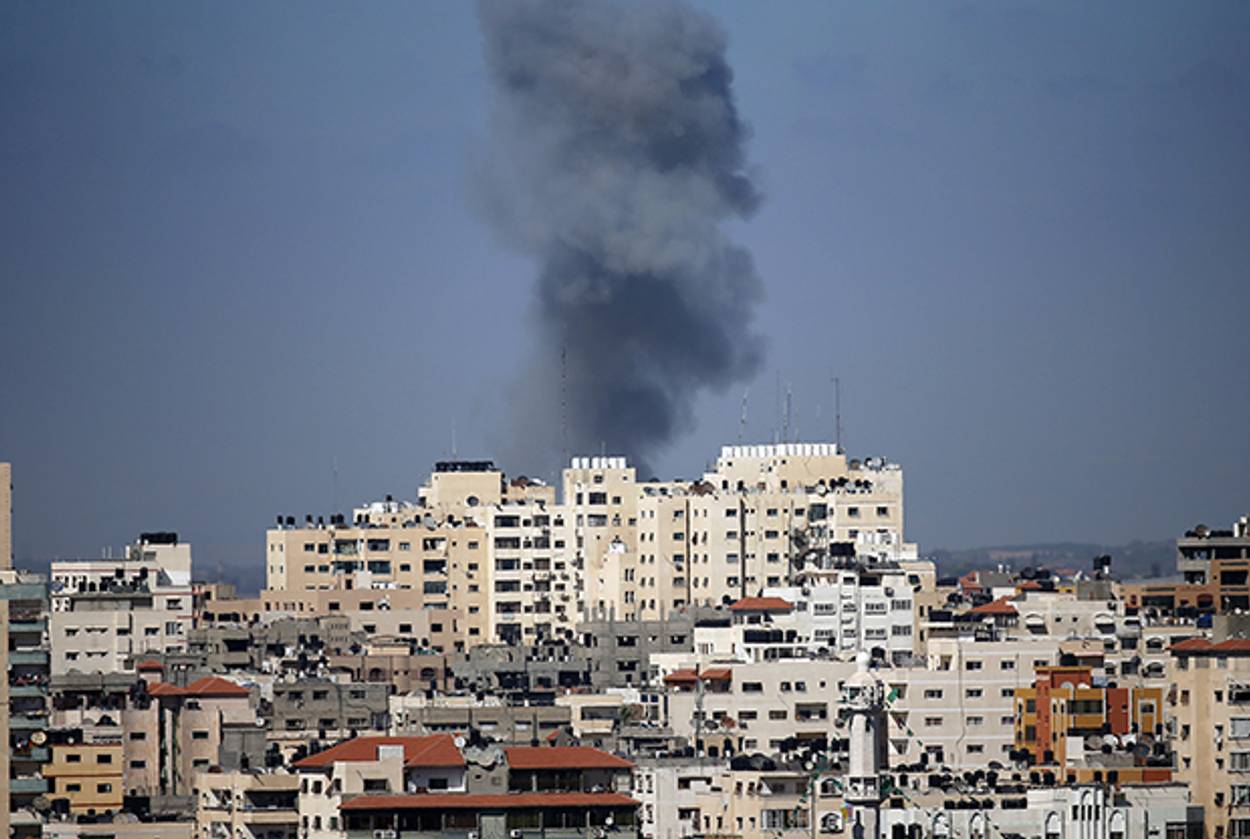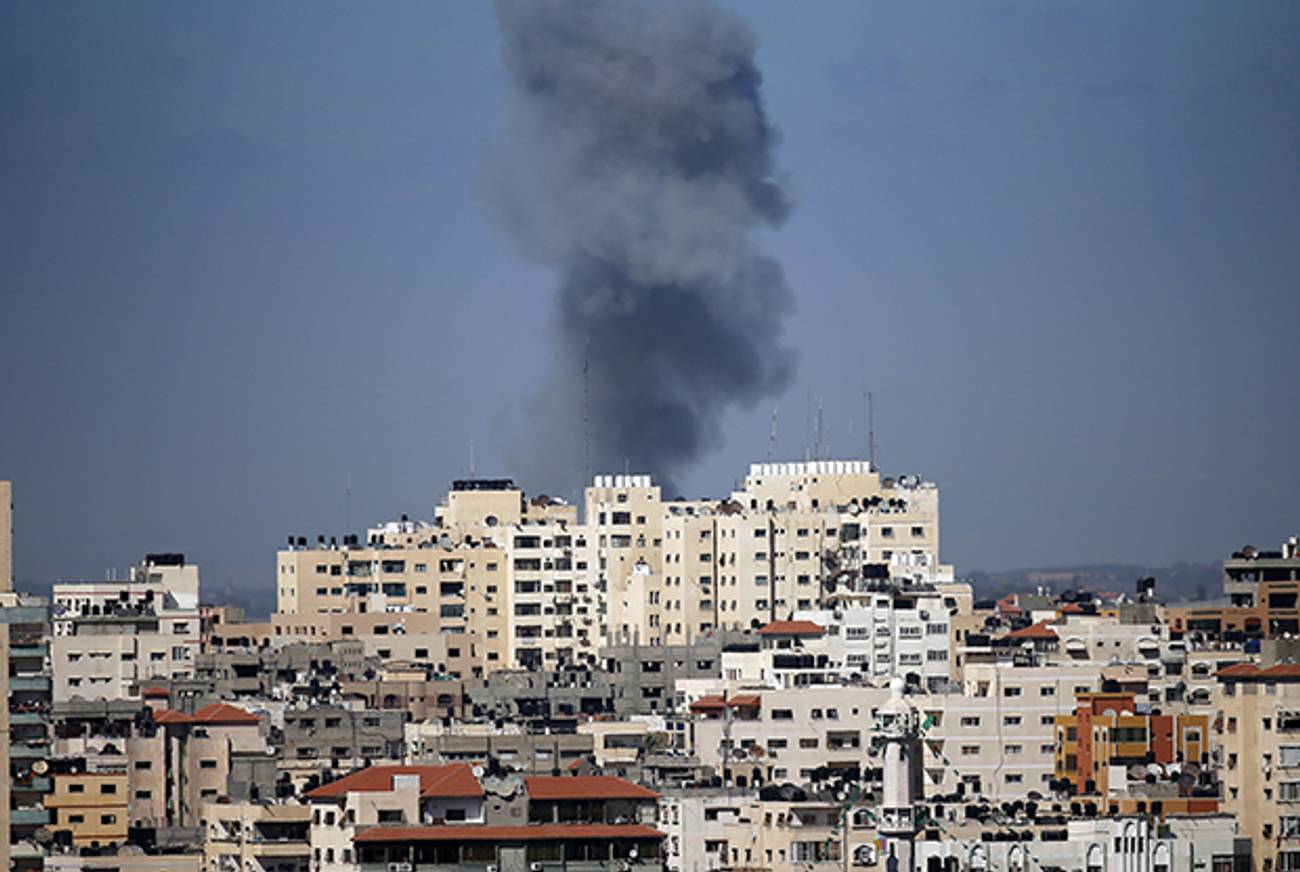Looking Beyond the Numbers in Gaza
Is Israel targeting civilians in Gaza? It’s more complicated than it may appear




The charge of intentionality—that Israel is intentionally targeting Palestinian civilians—has resurfaced in the latest conflict between Israel and Hamas, along with the familiar charge of disproportionality—that omnipresent word that is easier typed than understood.
The United Nations Office for the Coordination of Humanitarian Affairs (OCHA) has provided the most fodder for these charges when it recently declared that 77 percent of the Palestinian casualties since the beginning of Operation Protective Edge have been civilians. From this statistic alone, it is a reasonable conclusion to draw that Israel deliberately targets civilians.
Or is it? As an ignored footnote at the bottom of the OCHA report stated, “Data on fatalities and destruction of property is . . . based on preliminary information, and is subject to change based on further verifications.”
Rather than scrutinize the data used by OCHA and express caution about the preliminary nature of these numbers, news organizations like the Huffington Post have plastered the 77 percent figure on their homepages as if it is an indelible truth. However, according to Raphael Ahren, the diplomatic correspondent at the Times of Israel, “the number of casualties, and the percentage of civilians among the dead, comes exclusively from Palestinian sources.”
In the case of OCHA, its source for conflict-related injuries is the Ministry of Health in Gaza, an institution which had affiliations to Hamas before the current coalition government. According to Reuven Erlich, the director of the Meir Amit Intelligence and Terrorism Information Center (ITIC), who was interviewed by Ahren, the numbers from the Ministry of Health “don’t explain who is a terrorist and who is a civilian.”
When asked about the OCHA’s sources by e-mail, an OCHA analyst said that although it receives its data on injuries from the Ministry of Health, the data on fatalities is triangulated by the Protection Cluster, headed by the Office of High Commissioner for Human Rights, based on preliminary investigations carried out by three human rights organizations, two Palestinian and one Israeli. The analyst told me that B’Tselem is the Israeli organization and that she didn’t remember the names of the two Palestinian organizations.
A representative from the Protection Cluster, however, said that it compiles initial reports of casualties from the “media and other sources” or “are received directly from community members,” but wouldn’t name the Palestinian and Israeli organizations. It then uses those fatality figures only once they are corroborated by at least two of three unnamed organizations.
Further research into this issue by CAMERA, using a list of casualties provided to Al Jazeera by the Ministry of Health, challenges the 77 percent figure. Although the death toll has grown since CAMERA published its analysis on Monday, at the time, CAMERA found that of “the 150 male fatalities, 83 are between the ages of 16-39, 28 are over 40 years old and 20 are under 16 years old” and “only about 12 percent of the total fatalities are female, though females make up half the population.” Additionally, “[m]ales under 15 make up just 13 percent of the total fatalities even though they represent half of all males in the Gaza Strip.” This high number of “military-age males” who were present in a strike zone corresponds with the characteristics of combatants, rather than civilians. This is not to say that all or even most of those 150 males were in fact combatants, but it certainly complicates the statistic that OCHA quoted uncritically from the Ministry of Health.
Complicating this picture further is a comprehensive report from ITIC dated July 14, 2014, which found that “of 157 Gazans who have died, 57 were terrorist operatives (29 from Hamas, 22 from Palestinian Islamic Jihad and six from other terrorist organizations); 76 were non-involved civilians; and 38 could not be identified.” If accurate, this means that “of the victims that are known, nearly half are confirmed to be terrorists. This is roughly in line with what we saw during [Operation] Cast Lead, a 1:1 ratio of terrorist to civilian.”
Given the density of the Gazan population (though, contrary to popular belief, not the densest in the world), Hamas’s well-known (and admitted) use of human shields (see here, here, here, here, and here), placement of rockets in schools (which the United Nations Relief and Works Agency acknowledged was occurring today) and the demographics of Gaza (specifically, the disproportionately young age of Gaza’s population), such a ratio in fact reveals Israel’s attempts to protect innocent life during air strikes.
It’s not foolproof. Yesterday, four Palestinians boys were killed on a beach in Gaza City by an air strike, a tragedy that clearly illustrates the horrors of war. The IDF has said it’s investigating the incident to determine whether it was an air force or navy strike, or if it could have been the result of a failed Palestinian rocket attack. (In November 2013, an errant rocket, not an Israeli air strike as originally thought, killed the baby of a BBC reporter during fighting between Israel and Hamas.) Hamas, on the other hand, is perfectly comfortable targeting civilians.
As of today, Israel has conducted 1,653 strikes into Gaza in response to Hamas’s 1,241 rockets launched from Gaza, which have killed one Israeli civilian. The Palestinian death toll now stands at 214. That means that for every 8 strikes carried out by Israel, one Gazan dies—a number which includes combatants. Unlike simplistic pronouncements that the death toll is “utterly disproportionate,” a more careful examination of the surrounding data—beyond futile comparisons of Palestinian and Israeli deaths—forces the conclusion, argued by William Saletan at Slate, that “either Israel is failing miserably to kill people or, more plausibly, it’s largely trying not to kill them.”
Given that Israel has eliminated roughly 60 percent of Hamas rocket production sites and an estimated 40-45 percent of Hamas’s 10,000 rockets during Operation Protective Edge, Israel has accomplished a major military objective at the expense of minimal innocent lives.
On April 1, 2012, three years after publishing the United Nations report that came to bear his name, Richard Goldstone proclaimed: “If I had known then what I know now, the Goldstone Report would have been a different document.” Goldstone went further and retracted the most scandalous claim from the report, that Israel intentionally targeted Palestinian civilians during Operation Cast Lead. In his apology, Goldstone also praised Israel for the numerous “lessons learned” and policy changes Israel introduced as a result of the Goldstone Report, “including the adoption of new Israel Defense Forces procedures for protecting civilians in cases of urban warfare.”
We are seeing those new civilian-protecting procedures on display now (see Saletan’s second point). One has to believe that those who make the intentionality charge simply aren’t looking.